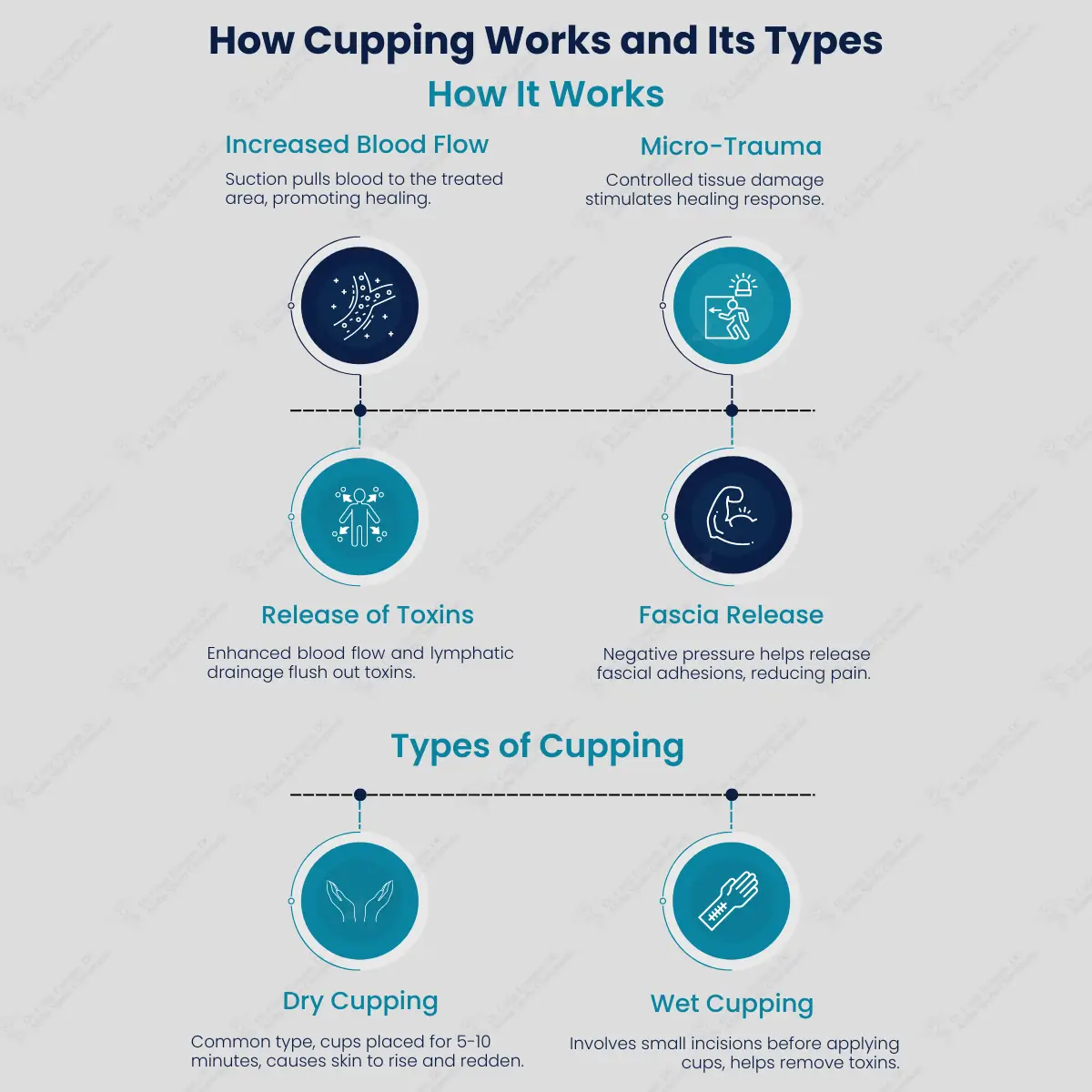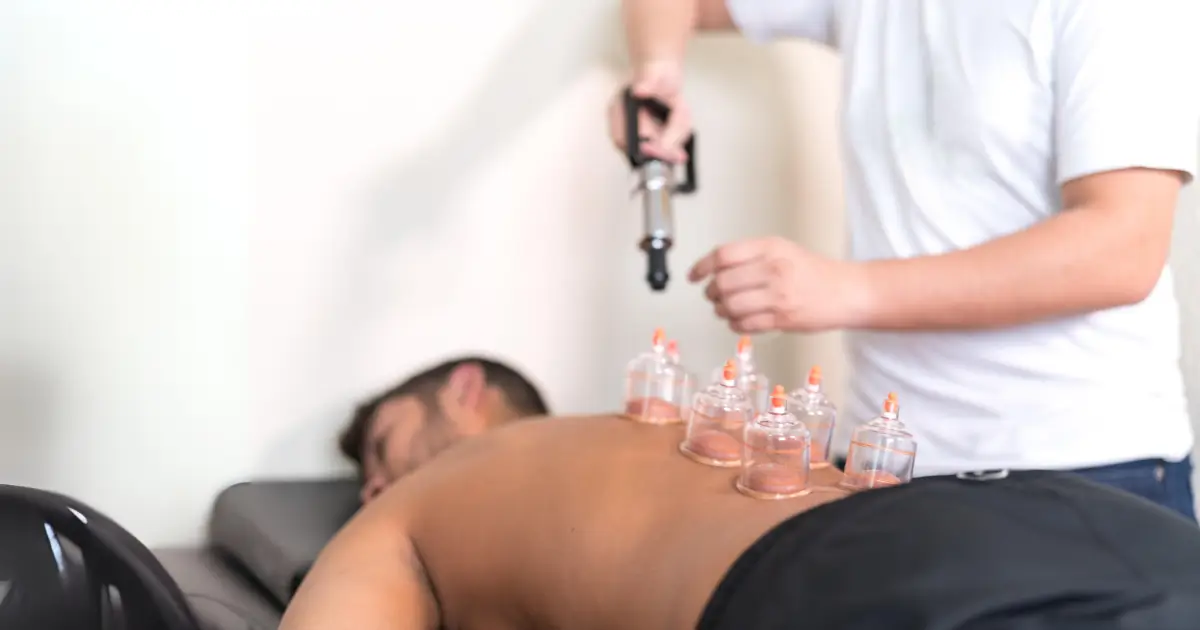An Ancient Remedy for Modern Pain Relief
Cupping therapy has been a conventional medical technique in numerous cultures for thousands of years. Its origins can be traced through ancient Egyptian, Chinese, and Middle Eastern communities. Recently, this practice has experienced a resurgence in popularity, especially in the era of modern wellness and alternative medicine.
The therapy consists of placing customized cupping on the skin to create a vacuum, accelerating healing, reducing pain, and improving general health. As someone who has integrated cupping into my chiropractic practice, I have witnessed firsthand the remarkable benefits it can offer to those suffering from various types of body pain.
As a doctor of chiropractic with over 25 years of experience, I have seen numerous patients suffer from chronic pain and discomfort. While traditional treatments often provide relief, I have found that incorporating alternative therapies can significantly enhance healing and overall well-being.
In this complete guide, I will discuss my thoughts on this historical technique and how it might assist in alleviating various physical ailments.
What is Cupping Therapy?
The cupping treatment is a technique that uses a vacuum to provide therapeutic benefits to the body. The practitioner sets cupping on specific locations of the skin, generating a vacuum that pulls the skin and underlying muscle layer into the cup. This strategy promotes blood circulation, removes toxins, and speeds up the body’s healing mechanisms.
Types of Cupping
There are primarily two kinds of cupping:
- Dry Cupping: The most prevalent type of pinching. Dry cupping involves placing a cup on the skin and leaving it there for a predetermined amount, usually 5-10 minutes. The cup’s suction causes the skin to rise and redden as the blood capillaries expand.
- Wet Cupping: Wet cupping creates tiny holes in the skin before placing the cups. This procedure is thought to eliminate toxic compounds from the body and a small volume of blood.
Tools and Materials
- Glass cups
- Plastic cups
- Silicone cups
- Fire cupping (using heat to create a vacuum)
- Manual pumps
- Self-suctioning cups

How Cupping Works?
The mechanism of action and purpose of cupping in physical therapy is fascinating. When the vessel falls on the skin and pressure is applied, it creates a vacuum effect. This vacuum pulls the skin, fascia, and superficial muscle layer into the cup, causing several physiological responses:
- Increased blood flow: The suction force pulls blood to the damaged area, improving flow and promoting healing.
- Micro-Trauma: The pulling effect on the skin creates a controlled, mild form of tissue damage that stimulates the body’s healing response.
- Release of Toxins: The increased blood flow and lymphatic drainage are believed to help flush out toxins and inflammatory mediators from the affected tissues.
- Fascia Release: Negative force can aid in removing fascial adhesions, increasing flexibility, and lowering pain.
Benefits of Cupping Therapy
- Pain Relief: Cupping has shown remarkable effectiveness in treating various pain conditions. Is cupping good for back pain? Some of the specific conditions that often respond well to cupping include chronic back pain, neck and shoulder tension, migraines and headaches, knee pain, and fibromyalgia.
- Improved Blood Circulation: Cupping creates a vacuum, which helps to enhance blood flow to treated areas. This enhanced circulation can promote faster injury healing, reduce muscle tension, and improve overall tissue health.
- Reduction of Inflammation: Cupping has been demonstrated to have anti-inflammatory effects, which can help with arthritis, inflammatory skin issues, and chronic infections.
- Enhanced Muscle Recovery: Athletes and fitness enthusiasts often find cupping helpful for reducing post-workout soreness, improving flexibility, and speeding up recovery from intense physical activity.
- Psychological Benefits: Beyond its physical effects, cupping can also provide psychological benefits, including stress relief and relaxation, potential reduction in symptoms of anxiety and depression, and improved sense of well-being.
Indications for Cupping Therapy
- Musculoskeletal Disorders
- Chronic neck and back pain
- Shoulder impingement
- Knee osteoarthritis
- Plantar fasciitis
- Respiratory Issues
- Asthma
- Bronchial congestion
- Chronic cough
- Skin Conditions
- Acne
- Eczema
- Psoriasis
- Blood Disorders
- Anemia
- Hemophilia (with caution and medical supervision)
- Gynecological Issues
- Menstrual pain
- Infertility
- Polycystic ovary syndrome (PCOS)
Contraindications and Safety Considerations
While cupping therapy is usually healthy when conducted by a qualified specialist, it should be avoided in the following situations:
Absolute Contraindications
- Bleeding disorders or patients on blood thinners
- A wound or ulcer in the treatment region.
- Active cancer or malignancies
- Severe cardiac or renal failure
- Pregnancy
- Children under four years old (for certain types of cupping)
Potential Side Effects
- Bruising and skin discoloration (typically resolves within a week)
- Soreness in the treated area
- Mild fatigue or lightheadedness after treatment
- Infections (if appropriate hygiene protocols are not performed)
- Burnt (because of improper fire cupping)
- Excessive bleeding (in wet cupping)
Recommendations for Safe Practice
- Choose a Qualified Practitioner: Always seek treatment from a licensed and experienced professional.
- Share your Medical History: Notify your doctor about any health conditions or medications you are currently taking.
- Follow Hygiene Protocols: Verify that your practitioner uses sterilized equipment and maintains proper sanitation protocols.
- Start Gradually: If you’re new to cupping, begin with shorter sessions and lighter suction to see how your body responds.
What to Expect During a Cupping Session
- Consultation: I will talk about your health issues and therapeutic goals.
- Preparation: You will be asked to expose the area to be treated and lie down comfortably.
- Application of Cups: I will apply the cups to specific points on your body, creating suction through one of the methods mentioned earlier.
- Treatment Duration: The cups are typically placed for 5-15 minutes, depending on your condition and tolerance.
- Cup Removal: I will carefully remove the cups, which may cause permanent circular indications on your skin.
- Post-Treatment Care: We will review aftercare recommendations and plan follow-up appointments as needed.
Get Cupping Therapy at My Clinic and Ease Your Body Pains
While cupping can be a powerful tool for managing pain and promoting healing, it’s essential to approach it as part of a comprehensive health strategy. If you’re considering cupping therapy, I recommend visiting my clinic for a personalized treatment plan.
By exploring different therapeutic options and working closely we can find the right combination of treatments to help you achieve your health goals and live your best life.
REFERENCES
- Pesut, S. (2021, February 18). Dry cupping therapy: Does it really help? University Hospitals. https://www.uhhospitals.org/blog/articles/2021/02/dry-cupping-therapy-does-it-really-help
- Cleveland Clinic. (2023, June 7). Cupping therapy: Definition, types & benefits. https://my.clevelandclinic.org/health/treatments/16554-cupping#risks-benefits

Meet Dr. Craig Eymann, a dedicated chiropractor and yoga enthusiast with over two decades of expertise in spinal health, sports chiropractic, and personalized care, prioritizing misalignment correction for swift injury resolution.



Leave A Comment